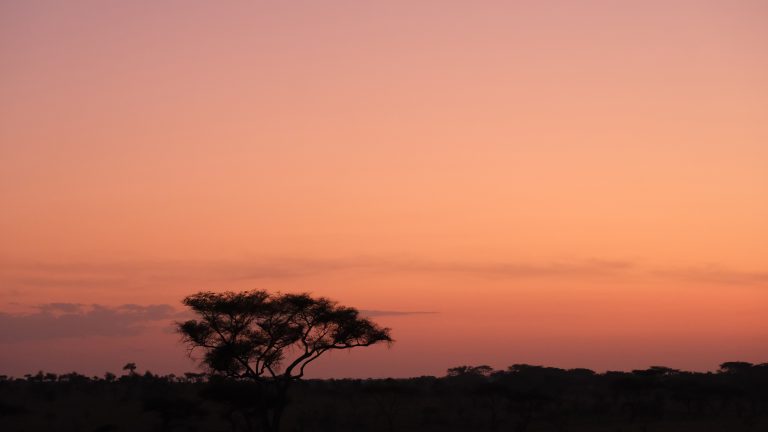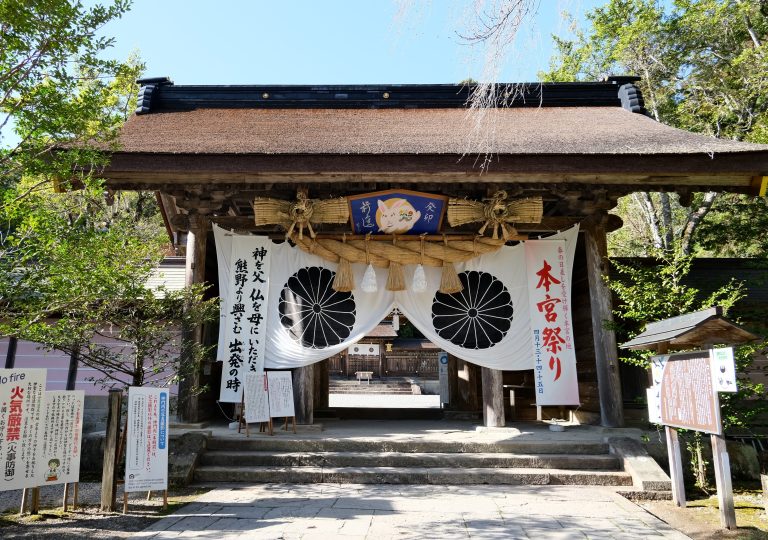Mt. Fuji Fall Foliage Guide: Hiking Spots, Accommodation & Photo Tips
Discover the perfect blend of gentle hikes, stunning photography, and cultural immersion in Japan’s most iconic autumn destination
Table of Contents
- Introduction to Momijigari at Mt. Fuji Five Lakes
- Complete 3-Day Itinerary
- Standout Accommodations with Mt. Fuji Views
- Top Hiking Trails for Fall Foliage
- Transportation Guide: Car vs. Public Transit
- Mt. Fuji Fall Foliage Timing & Weather
- Mt. Fuji Fall Foliage Photo Tips
- Cultural Tips & Language Guide
- Budget Planning & Fitness Requirements
Introduction to Momijigari at Mt. Fuji Five Lakes
The Art of Fall Foliage Hunting in Japan
Japan in autumn is pure magic. The crisp air, the fiery maples, and the quiet moments when Mt. Fuji rises behind a frame of golden leaves — it’s no wonder momijigari (紅葉狩り, autumn leaf hunting) has been celebrated for over a thousand years.
Like its springtime sibling, hanami (cherry blossom viewing), momijigari began in the Heian period (8th century) as an aristocratic pastime, complete with poetry and banquets beneath the maples. Over time, it spread to common people, who turned fall leaf-viewing into a joyful outdoor escape. I’ve always loved the word gari, which means “hunting.” It feels so fitting -because chasing the perfect autumn colors around Mt. Fuji really is a hunt, with weather and timing changing the scenery daily.
Mt. Fuji Five Lakes
The Fuji Five Lakes (Fujigoko) region offers something magical that you won’t find anywhere else: the chance to frame Japan’s most iconic mountain through blazing maple trees. These five lakes – Yamanaka, Kawaguchi, Saiko, Shoji, and Motosuko – were formed by ancient lava flows that dammed local rivers, creating today’s picture-perfect landscape.
Lake Kawaguchi serves as the region’s hub, hosting the famous Fujikawaguchiko Fall Foliage Festival (富士河口湖紅葉まつり) from late October through late November. The festival’s crown jewel is the “Momiji Corridor” – a tunnel-like canopy of maple trees along the lake’s northern shore that frames Mt. Fuji beautifully.
Complete 3-Day Mt. Fuji Fall Foliage Itinerary
Day 1: Car Pickup, Lake Exploration & Sunset BBQ
We took the train from Tokyo to Otsuki Station (大月) and picked up a rental car. The drive to Kawaguchiko was just 30 minutes, and Mt. Fuji greeted us along the highway.
We passed by several popular photo spots and picked up some snacks, then headed to Yamanaka Lake first. We drove around the entire lake to capture different angles of Mt. Fuji, then drove toward Kawaguchi Lake to check into our glamping site, Retreat Camp Mahoroba, which overlooks both Lake Kawaguchiko and Mt. Fuji perfectly timed for sunset.

Sunset View from Retreat Camp Mahoroba
We wandered over to a nearby Mt. Fuji Distant Worship Site (Tenku no Torii) for photos, then ended the night with grocery-store BBQ under the stars.

Sunset view at Tenku no Torii
Day 2: Morning Photography, Panoramic Hiking & Evening Lights
Morning began with photos at Oishi Park, where Fuji casts a perfect reflection in Kawaguchiko. After a stop at the reopened Worship Site for more shots, we headed to Shojiko for a gentle 3-mile hike up to Panorama Dai. The view here is unbeatable – Mt. Fuji in the distance with two lakes at its feet.

Sakasa Fuji (Mt. Fuji and its reflection)
Back at Shojiko, our car had a flat tire, but fate turned it into one of the highlights of the trip. The staff at Shoji Lake Hotel helped us sort everything with the rental company while serving tea and snacks by the window, where Mt. Fuji shimmered across the lake.

Sunset view at Shoji Lake Hotel
That evening, we visited the Maple Corridor, now glowing with lanterns, and grabbed festival snacks for dinner before soaking in the hotel’s onsen.
Day 3: Iconic Viewpoints, Forest Walk & Return to Tokyo
Our final morning began with sunrise Fuji photos straight from the hotel room (yes, still in pajamas). We then hiked the short trail to Nakanokura Pass Viewpoint, where the iconic “1000 yen bill” view of Fuji over Lake Motosu comes to life.
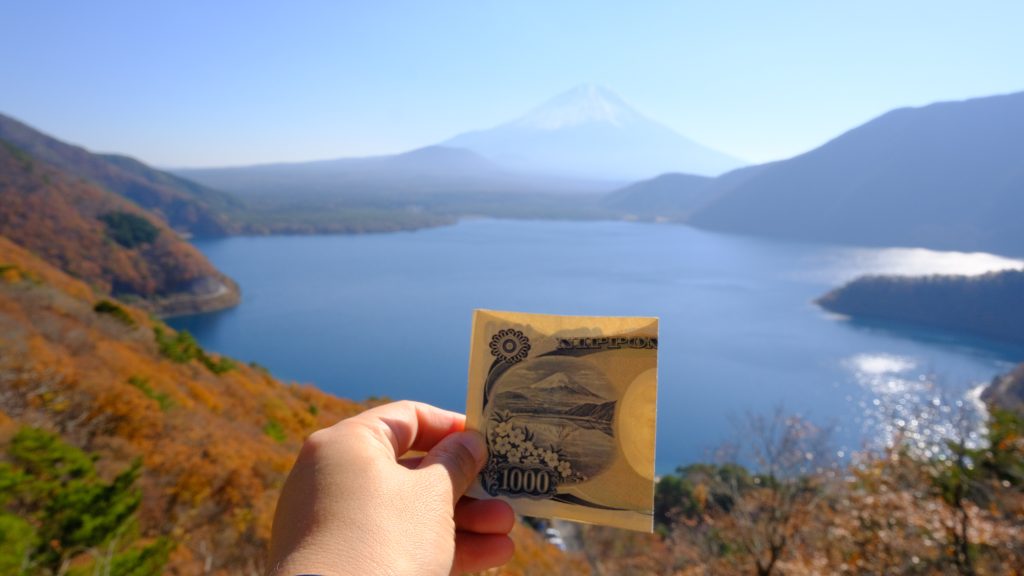
Nakanokura Pass View Point (Sen Yen Shot)
Next, we drove to Aokigahara Forest for a contemplative walk through the mysterious woodland. Before heading back to Tokyo, we made one last stop at Arakurayama Sengen Shrine, with its pagoda and Fuji backdrop. Crowded? Yes. Iconic? Also yes. We returned the car at Otsuki Station and trained back to Tokyo.
Standout Accommodations
Location
If you’re relying on public transportation, where you stay makes a huge difference. The farthest the train will take you is Kawaguchiko Station; after that, you’re at the mercy of local buses. Without a car, it’s best to book a place within easy walking distance of a train or bus stop – hauling a suitcase (not as forgiving as a backpack) down long sidewalks is not the dream. On the other hand, if you’re renting a car like we did, you’ll usually get better value staying a bit farther from the main transport hubs.
Rates
Hotels clustered around Kawaguchiko tend to be pricier. The area is more touristy, easier to access, and better known internationally. Unsurprisingly, accommodations that promise an unobstructed Mt. Fuji view will also charge a premium—because who doesn’t want Fuji framed in their window like a giant postcard?
Our stays
The locations of our two stays were pure magic, and I can’t recommend them highly enough.
Retreat Camp Mahoroba
Retreat Camp Mahoroba is a glamping site on a hill north of Kawaguchiko, and each campsite comes with a south-facing balcony that overlooks both Kawaguchi Lake and Mt. Fuji. We were able to watch both sunset and sunrise without having to compete with other tourists at crowded photo spots – it was incredible. The site is just a 5-minute drive from the Mt. Fuji Distant Worship Site, which in my opinion is one of the coolest photo shooting locations in the entire area.
Everything about this place impressed us. The site is clean, organized, spacious, and extremely well-managed with smooth check-in and check-out processes. We had the most lovely BBQ dinner right on our balcony while watching Mt. Fuji change colors. Compared to other more luxury glamping sites in the area, this one is honestly a steal at around $170 per night for a 4-person site. If you want prime Mt. Fuji views without the premium price tag, this is your spot.
Check availability at Retreat Camp Mahoroba
Shoji Lake Hotel
Shoji Lake Hotel literally saved our entire trip, and their incredibly friendly staff made all the difference. When our rental car got a flat tire during our hike (for reasons unknown, though likely because the tire needed replacement to begin with), we managed to drive very slowly to the hotel and park. The hotel staff immediately jumped into action, contacting our rental company, explaining our situation clearly, and coordinating with technicians to come replace the tire. They handled the entire situation for us.
My friend and I both speak some Japanese, but nowhere near well enough to explain a car problem as clearly as the staff did. The hotel staff speaks perfect English and couldn’t have been more helpful. While we waited anxiously in the lobby, they offered us complimentary drinks and snacks, and sat us by the windows overlooking Shoji Lake and Mt. Fuji. It turned into this surprisingly relaxing moment that completely eased our stress from the car situation. Even now, two years later, I still feel warmth thinking about that day and how they took care of us.
Beyond their exceptional service, this hotel sits right on the north coast of Shoji Lake, so we could see both the lake and Mt. Fuji directly from our room. All guests have access to the rooftop, though honestly, our room’s view was just as spectacular. My friend, who rarely rates anything online, immediately left a 10/10 review because we both felt they truly deserved it.
Check availability at Shoji Lake Hotel
Other recommendations
Mizno Hotel
My friend who lived in Japan for 8+ years and had been to this area multiple times highly recommends this one.
- Location & View: Perched right on the shores of Lake Kawaguchi, this hotel serves up postcard-perfect views of both the lake and Mt. Fuji straight from your room.
- Getting There: If you’re driving, on-site parking is free. No car? They’ve got you covered with a complimentary pick-up from Kawaguchiko Station (available 14:00–18:00).
- Convenience: It’s close to many of Kawaguchiko’s most popular attractions, so sightseeing is easy.
- Experience: Think luxury retreat – spotlessly clean, incredibly comfortable rooms, and a top-notch onsen to soak in after a day of exploring.
- Price: $430) for two people back in Nov 2018. Thanks to the weaker yen, 2025 rates hover closer to $370. Book early if you’re aiming for peak season – the best rooms (and rates) go fast.
Check availability at Mizno Hotel
Top Hiking Trails for Mt. Fuji Fall Foliage
Lake Shoji Panorama Dai Trail
Difficulty: Moderate | Distance: 2.6 miles | Elevation: 1,175 ft gain
Perfect for nature lovers wanting panoramic lake and mountain views. The forest trail showcases beautiful fall colors (we hiked one week past peak and still found gorgeous reds and yellows). The summit platform offers simultaneous views of Lake Shoji, Lake Motosu, and Mt. Fuji – a true 360-degree experience.
Trail tip: Can be connected with Nakanokura Pass for a challenging 10-mile loop if you have a full day.
Check out Lake Shoji Panaroma Dai trail on Komoot
View from Panorama Dai
Nakanokura Pass Viewpoint Trail
Difficulty: Easy | Distance: 0.8 miles | Elevation: 375 ft gain
This gentle 30-minute walk leads to the exact spot where Japan’s 1000 yen bill photo was taken. The trail ends at a comfortable viewing platform with steps for seating. Arriving slightly past peak foliage season meant we had this iconic viewpoint nearly to ourselves.
Perfect for: Families, casual hikers, or anyone wanting the famous “Sakasa Fuji” (upside-down Mt. Fuji reflection) photo without serious exertion.
Check out Nakanokura Pass View Point Trail on Komoot
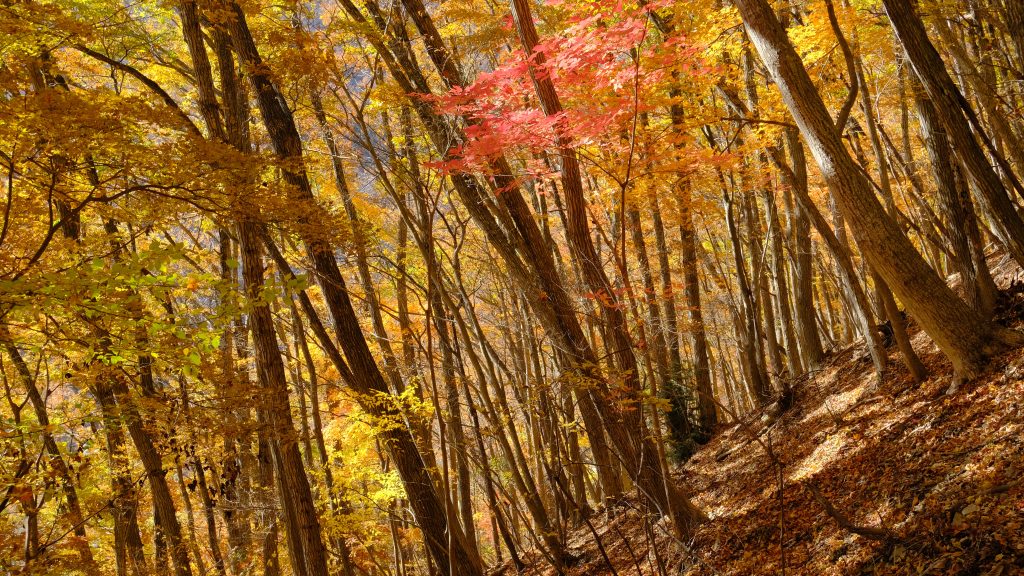
Fall Foliage on the trail
Transportation Guide: Combining Car & Public Transit
Let me start this section by saying that transportation in Japan is expensive, even compared to the US and even during this era of a weaker yen. So please factor transportation costs into your Japan trip planning from the beginning.
Our Approach: The Best of Both Worlds
We used a combination of public transportation and rental car, which worked out perfectly. Taking the train from Tokyo to Mt. Fuji Five Lakes Area (Otsuki Station in our case, but you can also check out other stations like Kawaguchiko Station if there are cars available) and picking up the rental car there gave us the efficiency of Japan’s excellent train system for the longer distance, while having car freedom for exploring the Five Lakes area where public transport is more limited.
Public Transportation Reality
Public or Private?
Although we call it “public transportation,” most train lines are actually run by private companies. JR (Japan Railways) is private, as are Tokyu, Keio, and others. This is why sometimes when you’re changing lines, even within the same station, you’ll have to exit and re-enter through different entrances.
Punctual dilemma
The trains are efficient, clean, and almost always punctual, which is wonderful when you can rely on them, but challenging when you’re running late. If you’re seconds behind schedule, your train is gone. Within big cities like Tokyo, trains run frequently so missing one isn’t a big deal, but if you’re heading to suburban areas or places like the Five Lakes region, I’d strongly advise being on time. Miss a rapid train and the next one might not come for an hour, and slower local trains can take much longer with multiple transfers.
Travel card
Getting a Pasmo card (available at any train station with a 500 yen deposit) or a Suica card (now available in Apple Wallet) is definitely worth it. Both are rechargeable and give you small discounts on rides. You can return the Pasmo card at the airport to get your deposit back. Whether you have a travel card or not, you typically can’t and don’t need to buy tickets in advance – buying at the station works best, and staff at ticket counters can explain your best route options, or the automatic machines have English options and are quite straightforward.
Rental Car Experience
Having a car in the Five Lakes area gives you ultimate flexibility for accommodation choices and helps you avoid some of the tourist crowds. It’s totally possible to visit the area without renting a car, but if you’re considering it, I’d say go for it – it’s worth the experience and opens up many more possibilities.
International Driving Permit (IDP)
You’ll need an International Driving Permit (IDP) before arriving in Japan, which costs $20 and is straightforward to obtain – just remember to do it before your trip.
How to book a rental car in Japan?
You can book rental cars through sites like Kayak or Booking.com, but it’s worth checking local companies directly – Toyota Rent-a-Car, Nippon Rent-A-Car, Nissan Rent a Car, or even Rakuten (Japan’s version of Booking.com) sometimes have better deals.
Our experience
Our rental cost roughly $100 per day plus gas. The main adjustment for many drivers is that cars drive on the left side of the road with the steering wheel on the right side – depending on the person, it may take some time to get used to. From our limited driving experience in the Five Lakes area, the local roads are quite narrow compared to what many people are used to, though the highways feel similar to anywhere else in the world.
Mt. Fuji Fall Foliage: Timing, Weather & What to Pack
🍁 When to Go
The autumn colors around Mt. Fuji usually reach their peak in early to mid-November. We went over Thanksgiving—slightly past the prime window—but still found plenty of fiery reds and golden yellows worth photographing. Even if you miss the “official” peak, the area stays beautiful well into late November.
🌤️ Weather at a Glance
Expect crisp, comfortable walking weather. Daytime highs hover around 59–68°F (15–20°C), while evenings can dip to 41–50°F (5–10°C). Rain is rare during this season, so you’ll likely enjoy clear skies and great visibility.
🎒 What to Pack
Think East Coast U.S. in November (NYC, DC vibes): chilly but not freezing. A practical layering system works best:
- Lightweight base layer
- Cozy sweater or mid-layer
- A softshell jacket to block wind
That combo kept us warm without weighing us down.
Mt. Fuji Fall Foliage Photo Tips
Fall foliage in Japan is stunning no matter where you go, but the Fuji Five Lakes area adds a layer of magic: fiery autumn leaves framed by Mt. Fuji and sparkling lakes. Since all five lakes sit north of the mountain, the best views are usually found along their northern shores — giving you that perfect composition of mountain + water + maple leaves.
Of course, “the best photo spot” is subjective, but here are some beloved classics along with a few personal favorites:
Tenku no Torii / Mount Fuji Distant Worship Site
This one stole our hearts. My friend has been to Kawaguchiko countless times, but it was her first visit here — it requires a short hike from town, so it’s often overlooked. Luckily, we stayed at Retreat Camp Mahoroba just nearby, and ended up going twice (yes, it’s that good).
- The shot: a red torii gate framing Mt. Fuji, with glimpses of the lake and maples. Even more breathtaking in person than in photos.
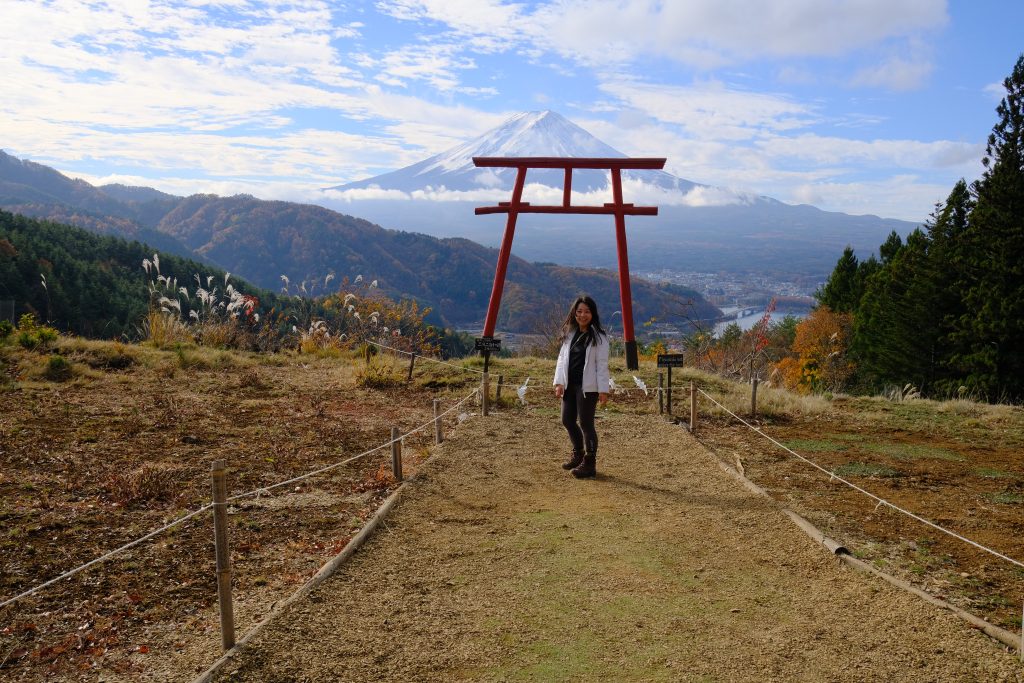
QQ at Tenku no Torii
Oishi Park → Kawaguchiko Museum of Art (via Maple Corridor)
This 30-minute lakeside walk along the north bank of Kawaguchiko is iconic. Everywhere you look, you’ll find photo ops of maple leaves up close, with Fuji and the lake in the background.
- Early morning: capture Mt. Fuji reflected in the still water.
- Midway: detour through Maple Corridor (Momiji Corridor) — lined with maples, beautifully lit at night, and dotted with food stalls in autumn. The evening vibe is wonderful, though low-light photography can be tricky.
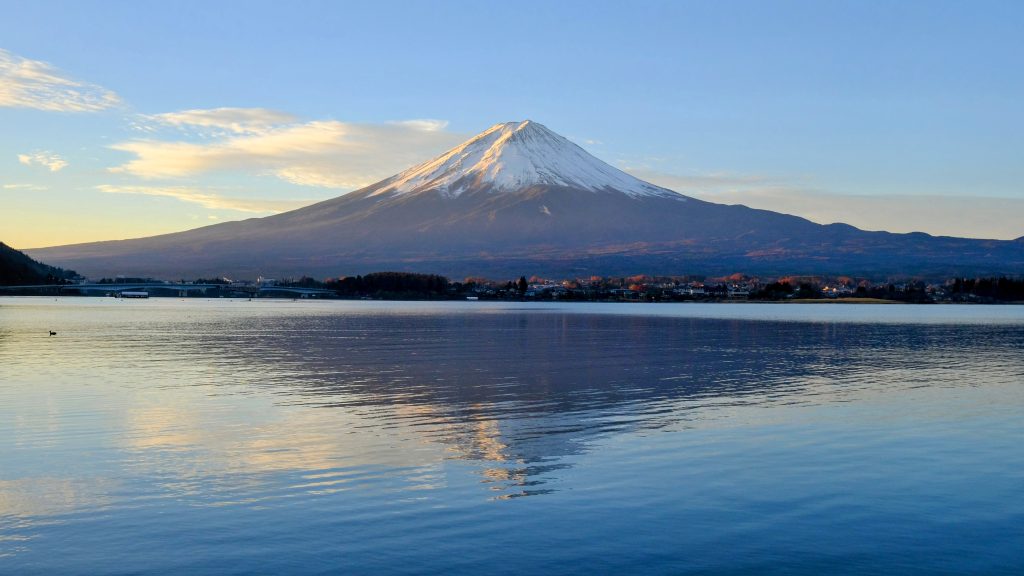
Sakasa Fuji
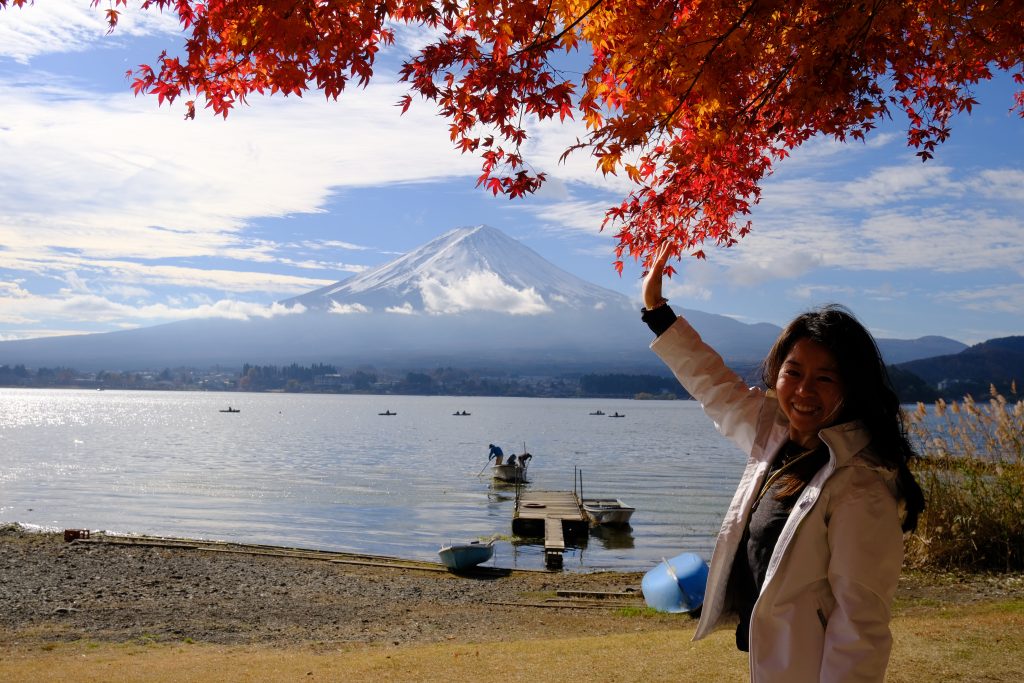
Mt. Fuji Fall Foliage at the north bank of Kawaguchiko
Nakanokura Pass View Point
Recognize it? This is the view printed on Japan’s ¥1000 bill: Mt. Fuji reflected in Lake Motosu. Getting there is simple — about a 30-minute drive from Kawaguchiko plus a 15-minute uphill walk. It’s quieter than most spots since tour buses skip it, and the wide view of Fuji rising over the entire lake is unforgettable.
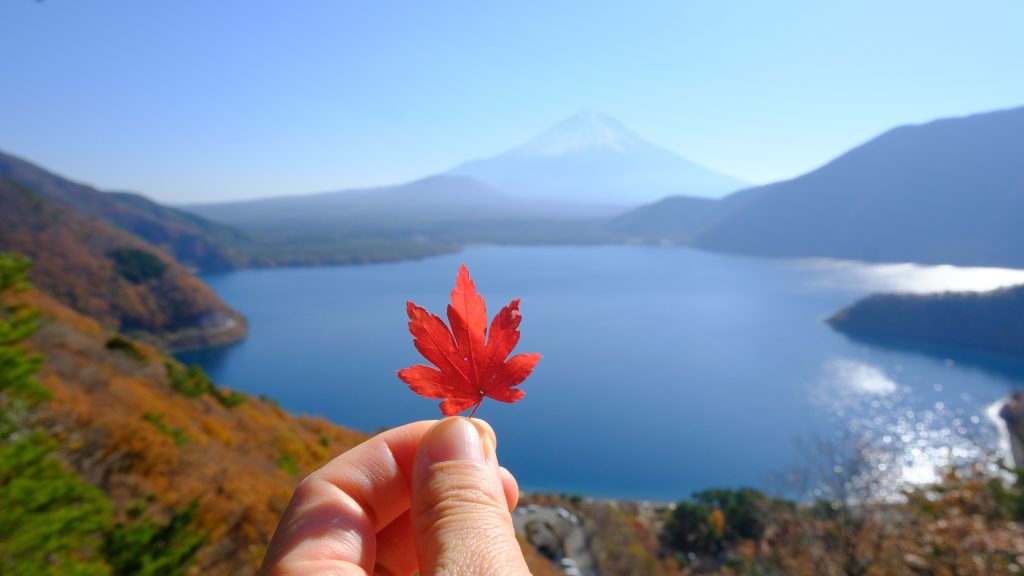
Nakanokura Pass View Point (sen yen view w/ red maple leaf)
Panorama View Point (Lake Shoji)
For hikers, this spot is gold. A one-hour climb leads to a sweeping panorama of two lakes (Shoji and Motosu), Mt. Fuji, and the surrounding peaks. See my Hiking Highlights section for details — but trust me, the effort pays off.

Mt. Fuji from Panorama View Point
Arakura Fuji Sengen Shrine
You’ve seen this shot: a red pagoda, maple leaves, and Fuji in one frame. It’s wildly popular with tourists, and for good reason. Personally, it wasn’t my favorite (we hit it at the wrong time of day and the crowds were heavy), but the staircase lined with fiery maples is still worth the walk.

Mt. Fuji with Arakura Fuji Sengen Shrine
Shoji Lake Hotel
This was our stay, and honestly, the view from our room was a photo spot on its own. Fuji reflected in Shoji Lake, especially at sunrise and sunset, was pure magic.

Reflection of Mt. Fuji and surrounding mountains near Shoji Lake Hotel
Language & Culture Tips
You probably already know the basics: konnichiwa (hello) and arigatō (thank you). And if you don’t, no stress — most people in tourist-friendly areas like the Fuji Five Lakes understand “hello” and “thank you” just fine. Many hotels, guesthouses, and attractions around Kawaguchiko also have English-speaking staff, so you won’t be stranded in a sea of kanji.
That said, a few little tips can make things less confusing (and a lot more fun):
- Ko = Lake. That’s why you’ll see both Lake Kawaguchi and Kawaguchiko. On Google Maps, the water itself is “Lake Kawaguchi,” while the surrounding area uses “Kawaguchiko” (like Kawaguchiko Music Forest Museum).
- Momiji (紅葉) = autumn leaves. Momijigari (紅葉狩り) = the charming Japanese phrase for “fall foliage viewing” (literally, “maple leaf hunting”).
- You don’t actually go on Mt. Fuji to see the leaves. The beauty is in the lakeside maples with Mt. Fuji as the backdrop.
- Masks aren’t new here. Locals often wear them when they’re sick to avoid spreading germs — a thoughtful gesture that existed long before 2020.
- Convenience stores are gold. Lawson, FamilyMart, 7-Eleven… they’re packed with surprisingly good food, snacks, and drinks. Even if you can’t speak Japanese, gestures (plus a polite smile) will get you far. “Yes/OK” and “No” are widely understood.
I grew up watching anime, took Japanese classes in college, and even passed the JLPT N2 exam — so consider this your mini insider’s cheat sheet.
Budget & Fitness Considerations
💰 Budget
- Lodging: Expect anywhere from $150–$400 per night, depending on location, season, and how early you book. Peak season sells out fast, so reserve early if you have a favorite hotel in mind.
- Transportation: With a rental car, budget around $100 per day, plus $35 per person for the Tokyo round-trip train.
- Food: Totally flexible. Street snacks around Maple Corridor are fun and inexpensive. Grocery shopping for BBQ? Meat tends to be cheaper than in the U.S., but fruits and vegetables are noticeably pricier.
🏃♂️ Fitness
This itinerary is beginner-friendly. The only “hikes” involve light uphill walking (about 1–1.5 hours max). You can always take it slow without worrying about falling behind schedule — it’s not a rushed trip.
At the End
The Fuji Five Lakes area is, without question, one of the most iconic autumn foliage destinations in the world. If you’re debating whether it’s worth the trip — it is. Absolutely. With the yen being weaker in recent years, it’s also more affordable than before. Think of it as a front-row seat to one of Japan’s most unforgettable seasonal shows.
Ready to plan your Mt. Fuji fall foliage adventure? Bookmark this guide and start watching for early booking opportunities – the best accommodations fill up quickly!
Want to see more guides like this? Join my newsletter!
Have you experienced momijigari in the Fuji Five Lakes region? Share your favorite photography spots and hiking memories in the comments below!





